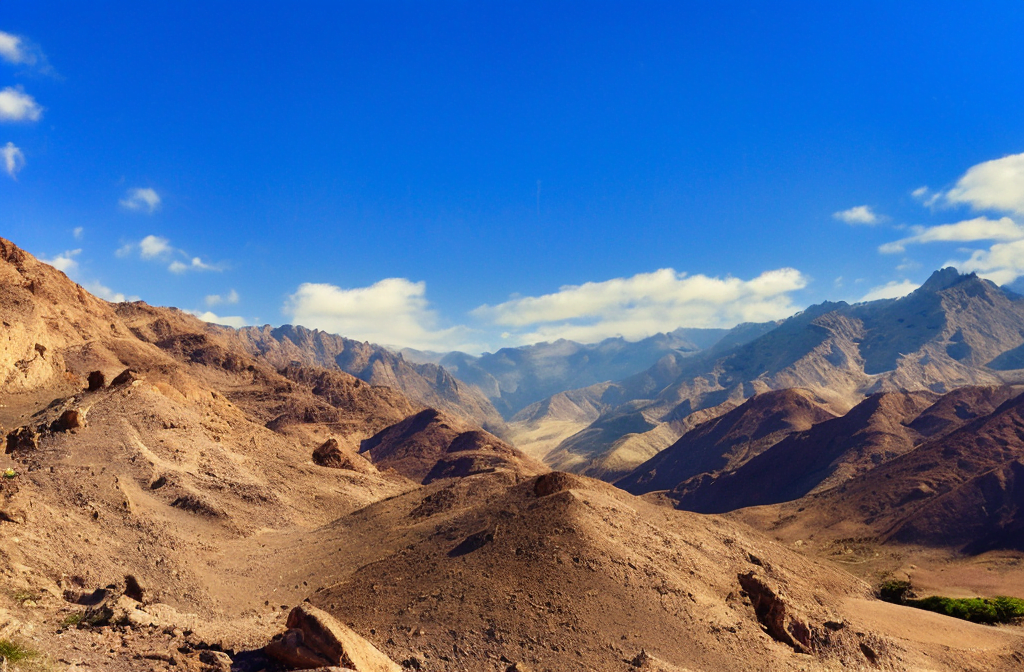Tourism is fun; you get to meet new people, learn about new cultures and build beautiful memories that will last forever. However, as a tourist, have you ever paused to think that the areas you visit are actually people’s homes? And, of course, you wouldn’t want to ruin the homes and environments of other people, right?
This is where green tourism comes in. Sustainable tourism factors in the economic, environmental, and social aspects of tourism, ensuring that it does not have any negative consequences on the environment. In addition to protecting the environment, sustainable tourism also protects the local communities and businesses.
In this article, I will go through 10 sustainable tourism examples around the world!
10 Sustainable Tourism Examples
Here are 10 remarkable examples of sustainable tourism for environmentally conscious persons, including both luxury travel and budget options! Responsible tourism examples:
1. Feynan Ecolodge – Jordan
The first ecolodge of its kind in Jordan, Feynan Ecolodge was designed to reflect the architectural style of the ancient caravanserai and was built in 2005 by the Royal Society for the Conservation of Nature.
In 2009, EcoHotels took over the management and operation of the lodge, offering travelers an opportunity to experience the wild nature of Jordan, meet its natives and explore its ancient history. All of this with minimal impact on the environment!
Feynan Ecolodge is found deep in the Dana Biosphere Nature Reserve; a mountainous place located in Jordan.
It is one of the best examples of sustainable tourism globally, with the National Geographic Traveler Magazine ranking it among the top 25 ecolodges globally.
The lodge has partnered with the Royal Society for the Conservation of Nature to provide solar-powered accommodation. The use of solar as the main source of energy greatly reduces the carbon footprint released and led them to win the World Responsible Tourism Award in 2019. Therefore, guests who use these accommodation services play a role in protecting the environment.
Dana Biosphere Reserve is one of the largest nature reserves in Jordan. It was established in 1989 to protect the area’s diverse wildlife, geology, and landscape. The reserve encompasses four different bio-geographical zones: Mediterranean, Irano-Turanian, Saharo-Arabian, and Sudanian. It is home to 800 plant species and 449 animal species, including several globally threatened/endangered species.

The Bedouin people are the original inhabitants of Jordan and are considered the backbone of the country. The Bedouin culture has transformed over time, as many people have left the traditional lifestyle and migrated to cities. However, there is still a small community of Bedouins who continue to live in the Feynan area, and geotourism has been helpful in preserving this culture.
As you can see, the Feynan Ecolodge is acting on all three pillars of sustainability (or the 3 E’s of sustainability) by supporting the local culture (promoting cultural sustainability), preserving the environment, and improving the local economy.
The Feynan Ecolodge is without a doubt one of the great examples of sustainable tourism, as well as an example of environmental responsibility!
2. Mdumbi Backpackers Hostel – South Africa
The Mdumbi Backpackers Hostel is specifically designed for people who like sustainable tourism.
Mdumbi Backpackers is a community-driven backpacker hostel located in the Transkei with panoramic views of the coast. They promote community involvement and sustainable eco-tourism.
The nearby beach was voted the best beach in Southern Africa, with world-class surf and incredible hiking and exploration opportunities, Mdumbi is a hidden gem not to be missed.
It provides an ideal base for whale-watching, hiking, and doing other outdoor tourist activities. The hostel uses multiple eco-friendly tools and practices, all of which are aimed to encourage more sustainable green tourism.
For example, all the accommodations use solar power and include a waste management system that is sustainable.
Besides, the hostel has a special ownership model, so that even local employees can own shares in the hostel.
3. Six Senses Resort – Fiji
The Six Senses Resort in Fiji resort is located on Malolo island at a secluded bay. The 5-star luxury resort can be said to meet all the sustainable tourism guidelines and principles.
Six Senses Fiji is committed to sustainability, with 100% solar power, programs to conserve energy and rainwater, make high-quality drinking water, and locally grow organic produce.
For example, Six Senses Resort uses solar energy to power the entire resort. Also, it established rain capture and efficient water filtration systems that help to reduce the usage of plastic bottles.
The resort has one of the largest off-grid solar installations in the Southern Hemisphere, using batteries to power the resort and the desalination plant.
In addition, the resort encourages recycling and re-using of materials, minimizing overall wastage and the release of harmful gases due to wastage.
Furthermore, the Six Senses Resort greatly supports different causes and programs aimed to help the local communities lead a more sustainable life.
For example, the resort works with Rise Beyond the Reef, an NGO that teaches women in remote communities to create marketable goods using traditional skills.
The Six Senses Resort in Fiji is clearly an amazing luxury eco-tourism example and a great option for those who can afford it!
4. Bom Bom Water Project – Príncipe Island – Africa
This water project is controlled and managed by the Bom Bom Resort. This luxury resort can be found in Príncipe and Sao Tome, an island that is located off the western coast of Gabon, West Africa.
This resort has a recycling scheme that involves replacing used water bottles with a stainless steel bottle (known as the “Biosphere Bottle”) that can be refilled.
So far, this recycling scheme has led to the removal of over 300,000 plastic bottles; a result that has contributed to a cleaner and more sustainable island.
More so, the Bom Bom Resort supports the water purification fountains and recycling projects established by UNESCO and the Príncipe Island World Biosphere Reserve.
It has established 13 water stations in different parts of the island, where tourists can refill their Biosphere Bottles. Besides, the resort encourages tourists and guests to take part in the sustainable programs available.
If you are interested in visiting this luxury eco-tourism option, then you can check a detailed review by some of their guests!
5. Inkaterra Hotels – Peru
Inkaterra Hotels is a 100% carbon-neutral organization with 47 years of experience in practicing sustainable tourism with its eco-lodges. Not bad for those luxury ecolodge options!
These hotels can be found in different parts of Peru, such as Tambopata, Machu Picchu Pueblo, Cusco, and Sacred Valley.
They were crowned by Greeninitiative, an organization endorsed by the United Nations (UN), as the very first “Climate Positive” hotel brand in the world.
All the lodges in these hotels are built using locally-sourced products; eliminating any transportation which would’ve led to a high carbon footprint.
Besides, the lodges are built in such a way that they do not ruin the environment or cause permanent damage.
Also, the Inkaterra Hotels provide support to education, scientific research, and local efforts aimed to conserve the environment and boost the economic condition of the locals.
Inkaterra Hotels is a great example of ecotourism, because the organization is truly aiming at sustainable development, by acting on all the 3 Ps of sustainability: people, profit, planet!
6. Atlantis Submarines – Hawaii
Sustainable tourism is not just about ecolodges, but also about experiences. Atlantis submarines in Hawaii offers the possibility to explore the submarine world in a more eco-friendly way.
The Atlantis Submarines are located in three different regions in Hawaii. They provide the thrill of diving up to 30 meters underwater to tourists and adventurous people.
Having been operational since 1988, the submarines are powered by environmental-friendly batteries. Therefore, they do not emit any pollutants or release harmful greenhouse gases in the atmosphere.
Furthermore, all the Atlantis Submarines move quietly via the water without causing any environmental disturbance.
The company has also installed environmental-friendly artificial reefs in two different locations; these reefs help to re-establish healthy habitats for Marine life and fish.
Indeed, the Atlantis Submarines provide an eco-friendly way of exploring the deep sea.
7. BEES Elephant Sanctuary – Thailand
The BEES Elephant Sanctuary is located in rural Thailand in the Maechaem district. Most animal sanctuaries are considered unsustainable since most of the activities only function to exploit the animals kept there. However, the BEES sanctuary is different from these other sanctuaries, since it takes a different approach that aims to improve sustainability.
BEES was founded in 2011 by Burm Pornchai Rinkaew and Emily Rose McWilliam.
Emily traveled to Thailand as a teen in early 2009 and was appalled by the living conditions and hardships elephants experienced working in tourist camps. She made a promise to the elephants to do something about their plight and, at just 18 years of age, co-founded BEES with her partner Burm.
BEES provides a safe, natural home for elephants to just BE elephants and also rescues and provides care for local cats and dogs.
This sanctuary has adopted a sustainable approach known as the “No Contact – Hands Off Approach.” The hands-off policy prevents humans from forcing elephants into contact.
Also, all the elephants in the sanctuary have either been rented from the owners, retired, or rescued in the wild, in turn giving them a break from all the tough work that they do.
More so, the BEES sanctuary has set up different programs that allow people to work for the sanctuary, providing them with the opportunity to give back to nature.
8. Summit Expeditions & Nomadic Experience (SENE) – Tanzania
SENE is a tour operator company based in Tanzania. It offers a wide range of tours, such as around Zanzibar island, climbing up to the top of Mt. Kilimanjaro, Mbahe farm cottages, and other wildlife safaris. Since the company was established in 1998, it has been offering sustainable tours to tourists and jobs to the locals.
The SENE tour company is a member of “Leave No Trace”; a set of ethics whose main goal is to promote a sustainable world that will support many generations to come.
Also, they use portable toilets whose disposal systems are biodegradable.
In addition, the company encourages tourists to take alternative routes to their destination, so that they give the busier routers a chance to recuperate.
All these sustainable activities help to promote a healthier local environment in Tanzania.
9. Wavelength tours – Australia
Wavelength is a family-operated firm with a team made of local marine biologists or people who have spent most of their lives on the barrier reef. It provides snorkeling tours on the great barrier reef of Australia. However, unlike other similar snorkeling tour firms, Wavelength offers more environmentally friendly tours.
For example, the company takes only a small group of people for snorkeling. They also have a “no-touch” policy that prevents unnecessary disturbance of nature.
Also, all tourists are recommended to use environmental-friendly sunscreen that won’t have any negative impact on the corals and marine life.
All these sustainable solutions help to protect the great barrier reef, ensuring that it is not put under much pressure, which would in turn have significant effects on the environment.
Of course there is still more that could be done, but this company is surely doing some steps in the right direction.
10. Trash Hero – Thailand/Global
Trash Hero is a volunteer-led movement whose mission is to drive positive change within communities all over the world. It does so by encouraging communities globally to pick up rubbish and prevent plastic waste being dispersed in the local environment.
While Trash Hero was first started in Thailand, they have been establishing in 12 more countries.
They combine the effort of local communities and eco-friendly tourists by encouraging both parties to clean rubbish wherever they see it and work together to create a healthy, trash-free world.
Trash Hero also produces steel bottles that are more sustainable; the movement sells these bottles and also works with other businesses to make them more sustainable and greener.
Why is Sustainable Tourism Important?
The main goal of sustainable tourism is to minimize the negative impact that tourism has on the environment and local communities. It ensures that all resources are used in an optimal way, preventing over-consumption and wastage. In turn, sustainable tourism helps to preserve the natural world, as well as local traditions, culture and heritage.
Besides, sustainability tourism provides social and economic benefits to the local communities. This contributes to a mutually beneficial relationship of “give and take” where both locals and tourists gain equal benefits.
What’s even better, the sustainable activities involved with this form of tourism ensure the long-term future of travel, such that the environmental, economic, and social benefits are enjoyed now and by many more generations to come.
Conclusion
Sustainable tourism is not only good for business; it is also good for the environment, ensuring sustainability now and in the future. Therefore, unless you want to promote an unsustainable world, you need to ditch mass tourism and apply to tours that support sustainable tourism.
However, did you know that soon we may be getting also new ways to travel sustainably and enjoy an eco-friendly luxury vacation on the water? This may soon become available thanks to the new solar catamarans that are starting to become more mainstream!
Here are the 10 sustainable tourism examples I went through in this article:
- Feynan Ecolodge – Jordan
- Mdumbi Backpackers Hostel – South Africa
- Six Senses Resort – Fiji
- Bom Bom Water Project – Príncipe Island – Africa
- Inkaterra Hotels – Peru
- Atlantis Submarines – Hawaii
- BEES Elephant Sanctuary – Thailand
- Summit Expeditions & Nomadic Experience (SENE) – Tanzania
- Wavelength tours – Australia
- Trash Hero – Thailand/Global
I hope you enjoyed learning about those responsible tourism examples, and if you are not sure where to start, simply pick one of the 10 sustainable tourism examples discussed above. These destinations will not only give you the best time of your life, but also give you the opportunity to make a positive contribution to the world while you’re having fun!









